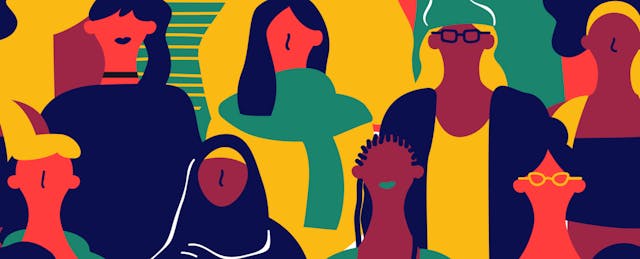For the past two months, Girls Who Code has been racing to design and deploy new virtual initiatives to serve thousands of girls around the world who rely on our programming.
We had no choice. We needed to reach our girls. We couldn’t risk losing progress on closing the gender gap in tech. And we refused to let the COVID-19 pandemic stop us.
The idea of a long-term shift toward virtual schooling fills me with dread and excitement at the same time.
Free of brick-and-mortar constraints, virtual education presents an opportunity to reach more girls, including those in underserved and rural communities. But only if we innovate on issues of access. If we don’t, then our most disadvantaged students will only fall further behind.
When schools closed their doors in March, they did so leaving as many as 12 million students without access to Wi-Fi. Little consideration had been given to the 1.4 million children who have caregiving responsibilities (the majority of them likely girls, because more than 75 percent of caregivers are female). It is no surprise that only 53 percent of students in public schools have attended online classes, compared with 82 percent of their private school peers.
And consider the importance of place-based learning for other reasons. Nearly 30 million students rely on free or reduced lunch programs at school. The emotional learning that happens in classrooms boosts achievement scores by as much as 11 percent. And then there’s the social isolation—42 percent of teens say they feel more lonely than usual, with girls more likely than boys to say so.
If remote education is here to stay, then we have to be proactive about designing systems and intentional about creating models that work for all students—no matter their circumstances.
And that’s exactly what we’re doing at Girls Who Code, the nonprofit I founded in 2012 to close the gender gap in tech. Half the girls we serve are black, latinx or low-income. These are girls who've been most-impacted by the pandemic.
When designing our programs, we had to ask ourselves: How can we run our classrooms virtually when one student is dialing in from the Hamptons, another from a homeless shelter? One connecting from a personal laptop, another on a family-shared device accessing Wi-Fi from the local Burger King? One with only a handful of chores, the other overwhelmed with caregiving responsibilities?
All our programs, including our new virtual Summer Immersion Program, consider these very challenges.
For girls who lack Wi-Fi or hardware, we have a tech-needs survey to get them the tools they need to participate. For girls who might lack time because they're caring for a sick family member or have other responsibilities, we've created a flexible model with two to three hours of class time, supplemented by one-on-one time with teachers, and offline independent study work. We’re thinking about the “Zoom background” we want our teachers to show, and whether in-app chat functions and polls might facilitate greater participation.
If it’s thoughtfully designed with accessibility in mind, then virtual education has enormous potential—for Girls Who Code, for the broader education system and for society at large. Because by thoughtfully designing virtual education, we’re acknowledging and addressing the depth of our inequities as a country, inequities that have left too many students behind for too long.
And that is the silver lining for me. If education is the bedrock of civilization—and I think it is—then we have an opportunity right now to reinforce that bedrock for ourselves, our children and their children.
Through our Girls Who Code programs, I’ve seen the beauty of a near-ideal American classroom. Full of students—black, white, rich, poor, transgender, cisgender, straight, bisexual, rural, urban, and everyone in between—learning with and about one another. And I’ve seen the promise that follows these students.
Our girls—grounded by a sense of belonging amid diversity, and invigorated by an otherwise inaccessible coding education—have gone on to create game-changing technologies. Video games to raise awareness about period stigma. Applications that combat bullying. And, most recently, 3D-printed PPE materials for healthcare professionals on the frontlines of the battle against COVID-19.
How we approach virtual education in the coming months will determine whether girls like these can continue to learn, create and lead.
Our children are our great equalizers. It’s on us to invest in them. All of them.


